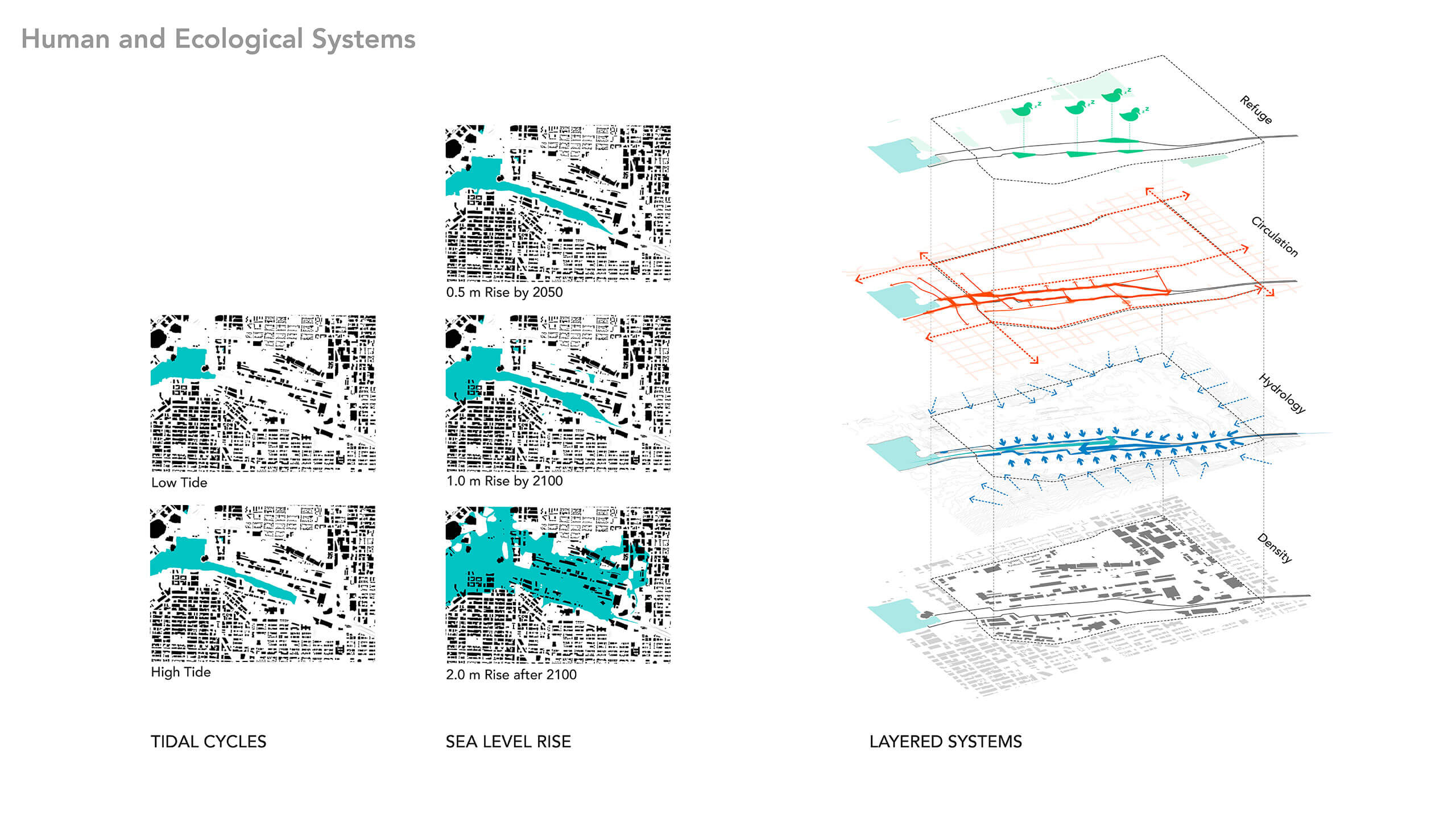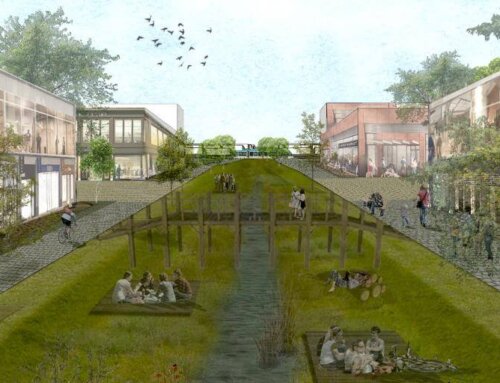Project Description
Bringing Back the Natural Habitats to False Creek Flat
By: Heather Scott
False Creek Flats was once expansive tidal mudflats. This project returns part of this industrial area to its original form, creating a rich ecosystem that provides cultural, regulatory, provisioning, and supporting ecosystem services.
The Fraser River Delta contains important estuaries for migratory birds in the Pacific Flyway, spanning the entire west coast of the Americas. The restored mudflats create a valuable stepping stone in this threatened habitat, providing insurance against additional habitat loss.
Removing an underused railyard reveals the original mudflats buried beneath. Remediation and native vegetative transplants populate the mudflats, providing a rich habitat. This resource connects with Vancouver’s sea wall. This natural ecosystem in the city enriches the everyday experience of the urban population.
The mudflats interface with the hydrology of the city. Green streets and the ravine below the Skytrain convey and filter stormwater. This filtration improves water quality in False Creek and creates mixed salinity conditions crucial for tidal estuaries.
Bridges and green streets connect the surrounding urban fabric. Sections of shoreline are dedicated to overwintering species, separated from the nearby Greenway Edge through visual buffers in the form of tall, dense vegetation, concealing and revealing views along or across the mudflats.
The mudflats provide an amenity for many adjacent uses: transportation, recreation, birdwatching, aquaculture, and education. Science World has an opportunity for hands-on learning in a natural ecosystem for a more ecologically literate and aware public.
Socially and ecologically, the mudflats create a more prosperous and resilient city.
https://sala.ubc.ca/work/unmuddy-waters-uncovering-intertidal-ecosystems-false-creek-flats




